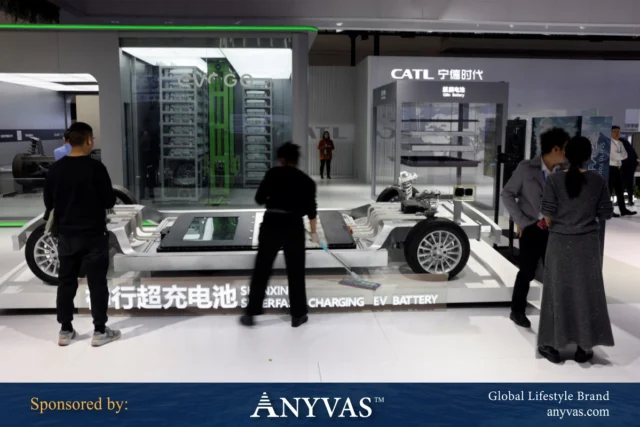China’s electric vehicle (EV) industry has surged forward, with models like BYD’s Seal and Great Wall Motor’s Funky Cat facing growing global resistance. The U.S. is drastically increasing tariffs on Chinese EV imports, pushing duties over 100%, and the European Union is hiking tariffs to around 50% for certain brands. Batteries, essential to EVs, are next in line for trade restrictions, but China’s dominance in this field makes it a formidable challenge for the West.
China is a global leader in battery production, with companies like Contemporary Amperex Technology (CATL) and others accounting for two-thirds of the global EV battery market in early 2024. These companies are growing fast, with some doubling their output compared to the previous year. CATL, in particular, posted impressive earnings of $5.6 billion in 2023. A significant portion of China’s battery production is exported, and the volume of lithium batteries shipped from the country has nearly doubled between 2015 and 2023.
In response, Western governments are escalating efforts to reduce reliance on Chinese batteries. The U.S. recently announced plans to raise tariffs on imported batteries and parts to 25%, while the Inflation Reduction Act (IRA) excludes vehicles with batteries sourced from Chinese entities. The EU is similarly tightening regulations around responsible sourcing and preparing to introduce a carbon border tax on high-emission imports, including batteries.
Despite these barriers, decoupling from China’s battery supply is challenging. While South Korean companies like LG Energy Solution, SK On, and Samsung SDI are expanding in the West, they still lag behind Chinese manufacturers in technological advancements, particularly in the production of lithium-iron phosphate cells.
Emerging battery technologies, such as solid-state batteries, offer a potential way for the West to catch up. Solid-state batteries promise higher energy density and better safety but are still in the development stage, with no clear leader in the race to commercialize them. Chinese firms, including CATL and BYD, are heavily investing in this technology, while Toyota and Volkswagen are also pursuing solid-state battery production.
However, even with new battery technology, the West remains dependent on China for raw materials like lithium, graphite, nickel, and cobalt. China controls around 80% of lithium chemical production and dominates in the processing of other crucial minerals. This makes it hard for Western countries to fully decouple from Chinese supply chains, as producing batteries outside China remains significantly more expensive.
China’s advantage extends beyond production costs. Its large domestic market serves as a testing ground for innovations, and the country holds a significant share of global patent applications for solid-state batteries. State support also plays a role, with companies like CATL receiving substantial government subsidies.
China is not complacent about its lead in the battery industry. In response to potential risks from emerging technologies, the Chinese government is coordinating efforts to foster innovation in solid-state batteries, with significant investments from both the public and private sectors.
While the future of battery technology remains uncertain, China’s current position as a leader in both battery production and innovation appears difficult to dislodge. Any move away from Chinese products could make EVs more expensive and technologically inferior, making China’s dominance in the global battery industry tough to challenge.


















